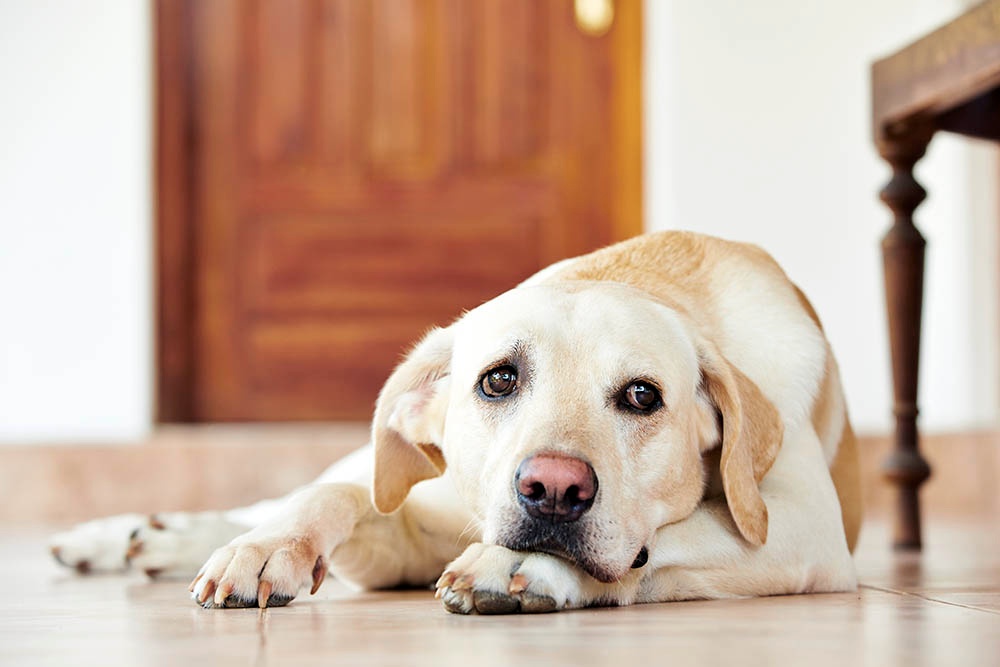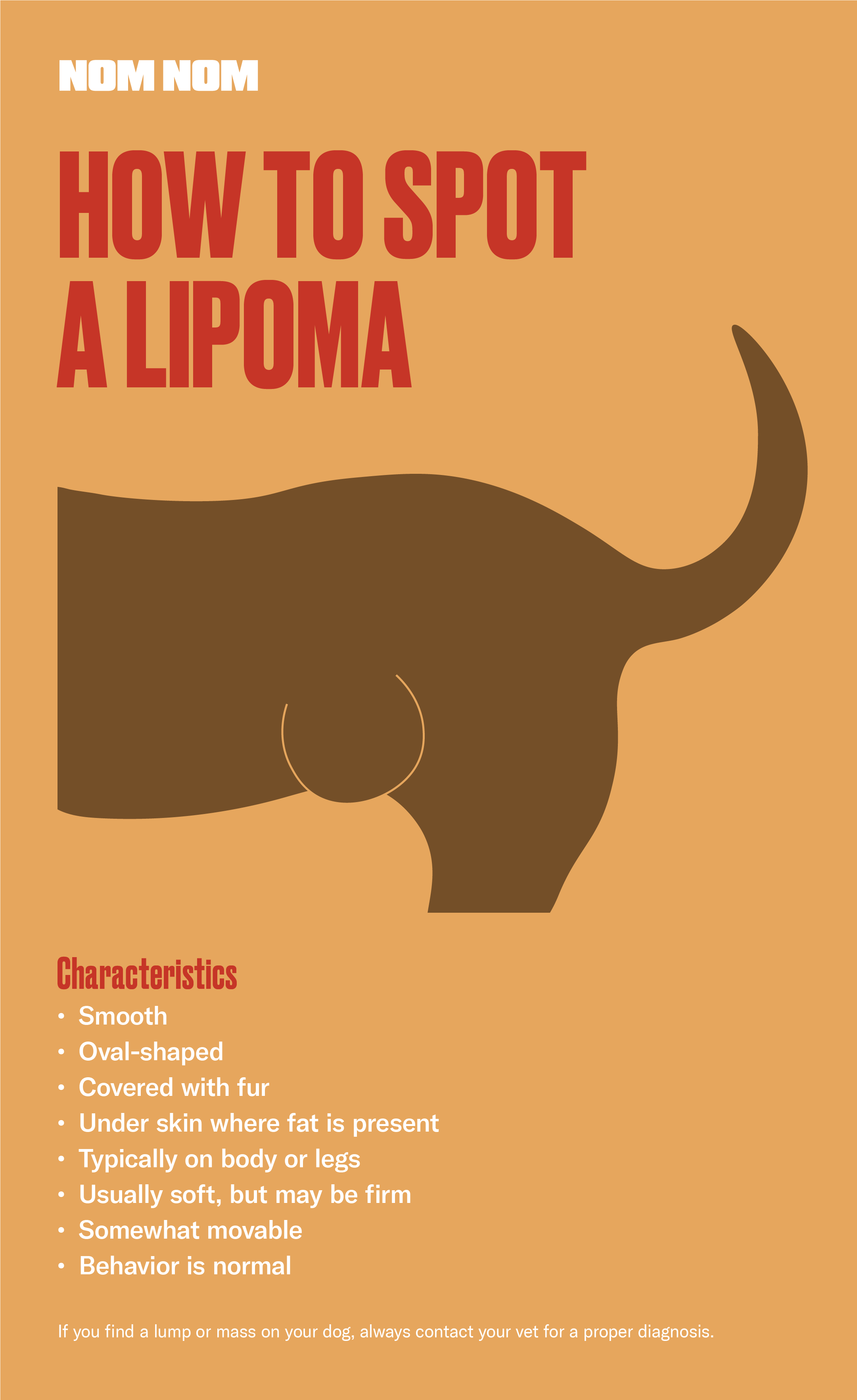Learn : Health & Wellness
Lipomas in Dogs: Everything You Need to Know
Discovering a lump on your beloved best friend can quickly sound some alarms.
While it might feel like that lump came out of nowhere, it’s important to remember that lumps on dogs aren’t as rare as you think — nor are they necessarily dangerous.
Most of these masses turn out to be non-threatening. That said, all new lumps should be examined by your veterinarian. In all likelihood, your pup is dealing with a lipoma.
What is a lipoma?
Lipomas are common and benign (not harmful! phew) fatty skin tumors known to occur in dogs and other mammals, including humans. These sometimes-soft, sometimes-hard moveable lumps in dogs grow under the skin and can occur anywhere on the body; it’s common for dogs to have multiple lipomas at once.
Lipomas in dogs can be big or small, but are generally soft or squishy (it’s all fat cells), round-ish in shape and are relatively moveable or unattached.
How do I diagnose a lipoma in my dog?
A lipoma must be diagnosed by a veterinarian.
If you feel a soft, fatty growth beneath your dog’s skin while you’re petting them, it’s likely to be a lipoma. However, there are other malignant fatty tumors in dogs that present similarly, like rarer liposarcomas.
You can’t tell the difference just by looking — but your vet can run a series of in-depth tests (staining cells and looking at them under a microscope) on the growth to confirm a benign lipoma diagnosis.
What causes dog lipomas?
Veterinary science still isn’t exactly sure. It’s unclear why some dogs go their whole life without a lipoma, yet others find themselves particularly prone to these benign little lumps.
That being said, science has helped us identify a couple risk factors:
Breed
Certain breeds are more likely to develop lipomas, while others see them less frequently.
|
More Likely Breeds |
Less Likely Breeds |
|
Labrador Retrievers Dobermann Pinschers Weimaraners Springer and Cocker Spaniels Beagles German Pointers Miniature Schnauzers |
Terriers (Yorkie, Westie, Stafford, & Jack Russell) German Shepherds Lhasa Apsos Shih-tzus Chihuahuas Cavalier King Charles Spaniels Bichons Boxers |
Age
Senior dogs especially are prone to developing new lumps and bumps as they age. It’s simply part of getting older.
Weight
Excess fat and obesity have been linked to increased likelihood of lipoma development.
Spay/Neuter status
Intact dogs appear to be less likely to develop lipomas than their spayed or neutered counterparts.
When are lipomas an issue?
Most lipomas are painless and generally don’t pose any health issues, they just add a little texture to your dog’s skin. However, larger lipomas or ones that develop on joints or skinfolds can pose mobility issues or discomfort. More than that, some can grow between muscle layers, known as infiltrative lipomas, and they’re a little more painful for your pup.
So keep a careful eye on their size — some lipomas are known to grow rapidly while others remain small. Likewise — watch your dog for any signs of pain, discomfort or loss of movement.
What treatments are available?
Vets can surgically remove lipomas that pose issues to help improve your pup’s quality of life.
Small lipomas are often left alone. However, it’s also easier to remove smaller lipomas — so if you notice your dog’s lipoma growing it’s best to let the vet know right away.
In lieu of surgery, your vet may also recommend an injection to help reduce the size of the lipoma. Thesel injections (such as steroid injections) exist and can be safe and effective. Similarly, liposuction has also been reported.
Keep in mind that lipomas rarely burst — nor should they — leave the removal to the professionals. If your pup has got a lump that does ooze or burst at home, it’s more likely a cyst or other tumor, and in any case will require a phone call to the vet.
Can I prevent lipomas in my pet?
While there isn’t a clear way to prevent lipoma development, excess body fat may be linked to their growth. Individually portioned fresh diets provide critical nutrients and help maintain a normal fat level in the body. Likewise, exercising your dog can also help keep them lean, and keep their joints moving and limber.
Holistic and natural remedies are also gaining popularity as possible preventative therapies and some may even help shrink lipoma size but scientific information is lacking at present.
Just remember… lipoma always means a lump. But a lump doesn’t always mean something serious. So if you do find a mass on your dog, breathe easy and simply bring it up to your vet at your next checkup.




 Overweight and Dog Weight Loss Plan
Overweight and Dog Weight Loss Plan